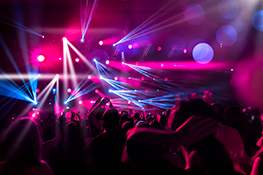Stage Lighting Color Mixing Techniques: Achieving the Perfect Hue
Understanding the Additive Color Model
In stage lighting, we utilize the additive color model, meaning colors are created by combining light sources. Unlike subtractive mixing (like paint), where combining colors results in darker shades, adding light sources brightens the overall hue. The primary colors in additive mixing are red (R), green (G), and blue (B). By strategically combining these, we can achieve a vast spectrum of colors. The key to mastering stage lighting color mixing lies in understanding how these primaries interact and the nuances of their combinations.
Primary Color Combinations: The Foundation of Stage Lighting
Mixing red, green, and blue in various proportions forms the basis of all other colors. For instance:
- Red + Green = Yellow: A vibrant, cheerful color often used for comedic scenes or sunny settings.
- Red + Blue = Magenta: A rich, purplish-pink, suitable for dramatic or romantic scenes.
- Green + Blue = Cyan: A cool, calming color, perfect for serene or tranquil scenes.
- Red + Green + Blue = White: Equal parts of all three primaries create white light. Adjusting the intensity of each primary allows for subtle variations in white balance, from warm to cool.
Beyond the Basics: Secondary and Tertiary Colors
While mastering the primary colors is crucial, exploring secondary and tertiary colors unlocks even greater creative potential. Secondary colors are created by combining two primary colors (yellow, magenta, and cyan). Tertiary colors are formed by mixing a primary color with an adjacent secondary color, resulting in a wider range of subtle hues.
Color Temperature and its Impact on Mood
Color temperature, measured in Kelvin (K), describes the warmth or coolness of a light source. Lower Kelvin values (e.g., 2700K) represent warmer, orange-toned light, often used for intimate or nostalgic settings. Higher Kelvin values (e.g., 6500K) produce cooler, bluish light, ideal for creating a futuristic or tense atmosphere. Understanding color temperature is crucial for setting the right mood and enhancing the storytelling on stage.
Advanced Techniques: Color Scrolling and Chasing
Modern stage lighting systems allow for dynamic color changes. Color scrolling involves smoothly transitioning between different colors, creating a sense of movement and energy. Color chasing involves sequentially lighting different fixtures with distinct colors, generating a rhythmic visual effect. These techniques can be used to heighten dramatic tension or add a vibrant pulse to a musical performance.
Gel Filters and Their Role in Color Modification
Gel filters are translucent colored materials placed in front of lighting instruments to modify the color of the light. They offer a wide range of colors and subtle shades, allowing for precise color control. Using gel filters in conjunction with the inherent color mixing capabilities of your lighting fixtures significantly expands your creative palette.
Choosing the Right Lighting Equipment for Color Mixing
The type of lighting fixtures you choose significantly impacts your color mixing capabilities. LED fixtures offer excellent color mixing precision and energy efficiency, while traditional tungsten lights can provide a warmer, more classic feel. Consider the specific needs of your production when selecting your lighting equipment.
Troubleshooting Common Color Mixing Challenges
Achieving the perfect hue isn’t always easy. Common challenges include color inconsistencies between fixtures and difficulties in achieving specific shades. Careful calibration, understanding color temperature, and using high-quality gel filters can help resolve these issues. Regularly maintain your lighting equipment to ensure accurate and consistent color output.
Conclusion: Mastering the Art of Color Mixing
Mastering stage lighting color mixing requires practice and a keen eye for detail. By understanding the additive color model, color temperature, and the various techniques available, you can create stunning visual effects that enhance any theatrical production. Experimentation and a thorough understanding of your equipment are key to unlocking your creative potential and achieving the perfect hue for your next stage performance.


 Auditorium Construction Services
Auditorium Construction Services 